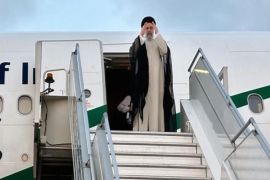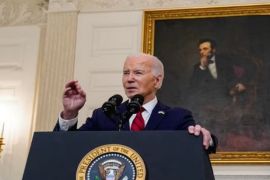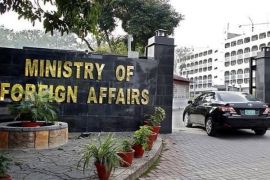The process of voting for reposing confidence in Prime Minister Imran Khan has concluded in the National Assembly as the ruling Pakistan Tehreek-e-Insaf (PTI) moves to counter the opposition’s ability to challenge the legitimacy of the incumbent premier’s government
Foreign Minister Shah Mahmood Qureshi tabled the resolution in the lower house on which voting is being held. The premier needs 172 votes to win the confidence vote.
Prime Minister Imran Khan reached the assembly hall shortly before the session commencement time. PTI lawmakers are also present in the assembly.
Prime Minister of Pakistan @ImranKhanPTI Arrives at National Assembly of Pakistan, Islamabad for Vote of Confidence (06.03.2021) pic.twitter.com/QdcpBOeONU
— Prime Minister's Office, Pakistan (@PakPMO) March 6, 2021
“That this House reposes confidence in the Prime Minister of the Islamic Republic of Pakistan, Mr Imran Khan, as required under clause (7) of Article 91 of the Constitution Islamic Republic of Pakistan," said the foreign minister as he read out the resolution.
Honoured to be #BehindYouSkipper @ImranKhanPTI pic.twitter.com/nNRLM1DiZI
— Shah Mahmood Qureshi (@SMQureshiPTI) March 5, 2021
Following the tabling of the vote of confidence resolution, NA Speaker Asad Qaiser read out the procedure for voting.
Bells were then sounded in the NA in order to let all lawmakers present outside the hall to make their way inside, following which the doors were sealed.
After reading out the resolution, the NA speaker directed the legislators who wanted to cast a vote to make their way to another chamber inside the lower house in order for their votes to be recorded.
Due to the united opposition boycotting the voting process in the National Assembly, all opposition seats remain empty.
The 30th NA session – on a single point agenda – will make it clear whether PM Imran commands the trust of the house and whether the lawmakers who allegedly ditched the ruling candidate on the general seat in the recently-held Senate election stick to their stand.
PTI lawmakers started arrived at the assembly earlier and the party focused on ensuring full attendance of allied and party members.
The opposition alliance – Pakistan Democratic Movement (PDM) – stunned the PTI government on March 3 when PDM candidate Yousuf Raza Gillani pulled off an unexpected victory against the ruling party’s Dr Abdul Hafeez Shaikh in the Senate elections on the general seat from Islamabad.
The five-vote victory in the capital’s Senate election brought the defining moment in the otherwise battle of narratives going on for months between the government and the PDM.
But before the opposition could move a vote of no-confidence, PM Imran announced that he would take a vote of confidence from the house. Countering the government’s move, the PDM announced a boycott of Saturday’s NA session.
Scenes kuch yunh hain!
— PTI (@PTIofficial) March 6, 2021
Women Parliamentarians in the lobby waiting to go and vote for #PrimeMinisterImranKhan! pic.twitter.com/i5YqSWHAea
Temperatures rise outside parliament
Outside the parliament in the red zone, PML-N protesters and PTI supporters engaged in a short brawl and shouted slogans against each other. PML-N's Shahid Khaqan Abbasi, Ahsan Iqbal and Musadiq Malik were among the PML-N leaders present in the scene.
The incident occurred when PML-N leaders tried to address the media, PTI workers surrounded the PML-N leaders and a scuffle broke out. A large crowd has now gathered at D-Chowk and some political workers have entered the Parliament Lodges.
A large contingent of law enforcers has arrived at the scene and have managed to separate the political workers of the two parties.
‘PM Imran will start a new political life today’
Interior Minister Sheikh Rasheed said he believes that Prime Minister Imran Khan would get the vote of confidence today.
“Today is a big day,” he said adding that PM Imran would start a new political life after today's vote.
It is unfortunate that the Opposition was not participating in today’s session, the minister lamented. “Imran Khan’s decision was a big step,” he said referring to the confidence vote.
Talking about the recent Senate elections, the minister said that the government won the majority of seats.
Numbers required
A total of 172 votes in the 342-member house are needed for a simple majority and to stay in power. The ruling coalition had 181 members but after the resignation of one of its MNA, Faisal Vowda, the number has come down to 180. The opposition coalition has 160 members in the house.
Party-wise, the PTI had 157 members in NA but following the resignation of a lawmaker, it has now 156 members while its allies include seven MNAs from MQM, five each from the PML-Q and the BAP, three from the GDA and one MNA each from the AML and the JWP.
Two of the four independents are also members of the ruling coalition; making a grand total of 180. Since the opposition has already boycotted the session, all the ruling party needs to do is to get all those standing with the government to vote for the PM.
Why is a vote of confidence needed?
According to Article 91(7) the “prime minister shall hold office during the pleasure of the president, but the president shall not exercise his powers under this clause unless he is satisfied that the prime minister does not command the confidence of the majority of the members of the National Assembly, in which case he shall summon the National Assembly and require the prime minister to obtain a vote of confidence from the assembly.”
Section 36 of the Rules of Procedure and Conduct of Business in the National Assembly, 2007, explains that whenever the prime minister has to obtain a vote of confidence under clause (7) of Article 91, voting shall be recorded in accordance with the procedure set out in the Second Schedule, which defines the procedure for recording of votes.
Since all elections under Section 226 of the Constitution, other than those of the prime minister and the chief ministers, are held by secret ballot, the voting process will be open and if the premier fails to get simple majority – 172 votes out of the 342 votes – he is sent packing and the cabinet is dissolved.
Under Article 58(1), the president can dissolve the National Assembly if so advised by the prime minister but it can only happen before the house goes for a vote of confidence and a prime minister against whom a resolution for a vote of no-confidence has been passed can’t dissolve the assembly.
Article 58(2) states that “Notwithstanding anything contained in clause (2) of Article 48, the president may also dissolve the National Assembly in his discretion where, a vote of no-confidence having been passed against the prime minister, no other member of the National Assembly command the confidence of the majority of the members of the National Assembly in accordance with the provisions of the Constitution, as ascertained in a session of the National Assembly summoned for the purpose.”
Article 91(8) states that the prime minister may, by writing under his hand addressed to the president, resign his office.
Voting procedure
The procedure for vote of confidence on the prime minister has been clearly defined in the Second Schedule of the NA Rules of 2007.
The Second Schedule states that before the voting commences, the speaker shall direct that the bells be rung for five minutes to enable members not present in the chamber to be present.
Immediately after the bells stop ringing, all the entrances to the lobby shall be locked and the assembly staff posted at each entrance shall not allow any entry or exit through those entrances until the voting has concluded.
The speaker shall then read out the resolution before the assembly and ask the members who wish to vote in favour of the resolution to pass in single file through the entrance where tellers shall be posted to record the votes.
On reaching the desk of the tellers, each member shall, in turn, call out the division number allotted to him under the rules. The tellers shall then mark off his number on the division list simultaneously calling out the name of the member.
In order to ensure that his vote has been properly recorded, the member shall not move off until he has clearly heard the teller call out his name.
After a member has recorded his vote, he shall not return to the chamber until bells are rung under paragraph. When the speaker finds that all the members who wished to vote have recorded their votes, he shall announce that the voting has concluded.
Thereupon the secretary shall cause the division list to be collected, count the recorded votes and present the result of the count to the speaker.
The speaker shall then direct that the bells be rung for two minutes to enable the members to return to the chamber. After the bells stop ringing, the speaker shall announce the result to the assembly.







